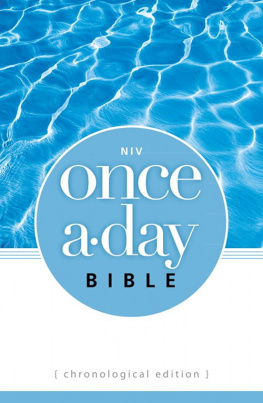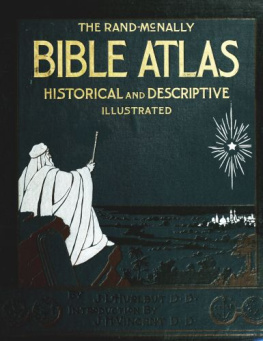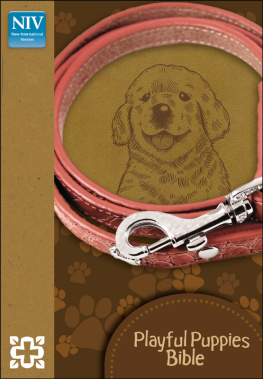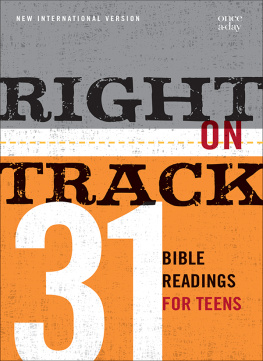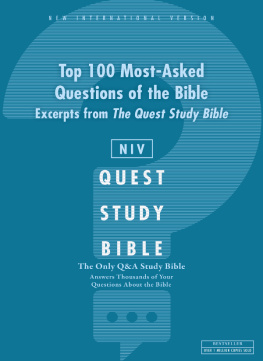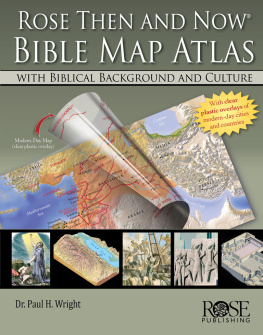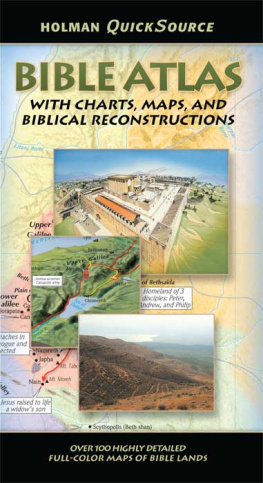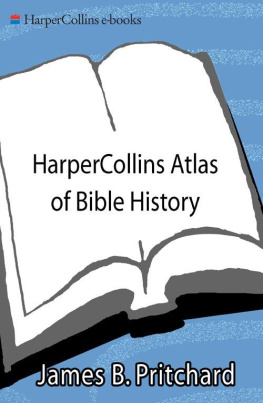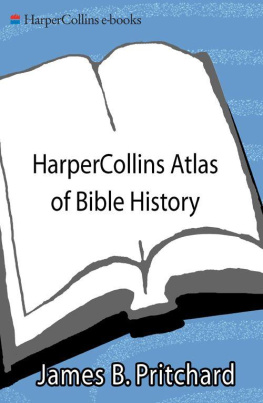ZONDERVAN
ATLAS OF THE BIBLE
Revised Edition
CARL G. RASMUSSEN

ZONDERVAN
Zondervan Atlas of the Bible
Copyright 2010 by Carl G. Rasmussen
Requests for information should be addressed to:
Zondervan, Grand Rapids, Michigan 49530
Library of Congress Cataloging-in-Publication Data
Rasmussen, Carl.
Zondervan atlas of the Bible / Carl G. Rasmussen.Rev. ed
p. cm.
Rev. ed. of: Zondervan NIV atlas of the Bible.
Includes bibliographical references () and index.
eISBN 978-0-310-52126-6
ISBN 978-0-310-27050-8 (hardcover, printed)
1. BibleGeography. 2. BibleGeographyMaps. 3. BibleHistory of Biblical events. 4. BibleHistory of contemporary events. I. Rasmussen, Carl. Zondervan NIV atlas of the Bible. II. Title. III. Title: Atlas of the Bible.
BS630.R37 2009
220.9'1dc22 2009015937
All Scripture quotations, unless otherwise indicated, are taken from the Holy Bible, New International Version, NIV. Copyright 1973, 1978, 1984 by Biblica, Inc. Used by permission of Zondervan. All rights reserved worldwide.
Maps by International Mapping. Copyright 2010 by Zondervan. All rights reserved.
All pictures in this book were taken by the author, Carl G. Rasmussen, unless otherwise indicated. Many of the photos in this atlas, plus over 3,000 more, are available at the authors website www.HolyLandPhotos.org.
Any Internet addresses (websites, blogs, etc.) and telephone numbers in this book are offered as a resource. They are not intended in any way to be or imply an endorsement by Zondervan, nor does Zondervan vouch for the content of these sites and numbers for the life of this book.
All rights reserved. No part of this publication may be reproduced, stored in a retrieval system, or transmitted in any form or by any meanselectronic, mechanical, photocopy, recording, or any otherexcept for brief quotations in printed reviews, without the prior permission of the publisher.
Cover design: Rob Monacelli
This book is dedicated to my wife, Mary, with whom I have spent sixteen exciting years traveling, teaching, and guiding in the lands of the eastern Mediterranean.
CONTENTS
Appendices
Thank you for purchasing the HarperCollins Christian Publishing eBook version of Zondervan Atlas of the Bible, Revised Edition.
What is the difference between an eBook and a print book?
eBook versions contain all of the content and supplementary materials found in the original print versions and are optimized for navigation in the various apps and devices used for display. eReaders recognize text as one fluid string and are formatted in a single column. eReaders currently do not support the more complex layout seen in print version books. Therefore, some content may not appear in the same place as in the original print version, but it is structured consistently and uses hyperlinks to navigate between related content.
How do I use the eBook Table of Contents?
*Important Note: Be sure to consult your device manufacturers Users Guide for device-specific navigation instructions.*
The is the primary navigation anchor to quickly access various parts of the eBook. It is generally formatted in the same order as the original print version and is hyperlinked as follows:
Selecting an entry in the .
How do I navigate the content?
The eBook version of Zondervan Atlas of the Bible, Revised Edition includes as well as the main book text.
are hyperlinked directly to the content-specific location in the main text.
Select the hyperlinked entry in the to go to its location in the main text.
Select the hyperlinked entry in the main text to go back to the article or list in the or use the devices Back button or function to go back to the last selection.
includes hyperlinks to Bible Verse citations in the main text.
Select the .
Select the hyperlinked page number to the citation in the main text.
Use the devices Next Page button or function to scroll through the pages.
Use the devices Back button or function to go back to the last selection
include bold face page numbers that refer to names that are located on maps.
Select the .
Select the bold face hyperlinked page number () to a map title in the main text.
Use the devices Next Page button or function to scroll through the pages.
Use the devices Back button or function to go back to the last selection
entries are hyperlinked directly to the content-specific location in the main text.
Select the .
Select a letter A from the alphabet.
Use the devices Next Page button or function to scroll through the entries.
Select the hyperlinked page number 1 to go directly to the citation in the main text.
Use the devices Back button or function to go back to the last selection.
I n 1967 my wife and I undertook a journey that changed the course of our lives. In that year we traveled to Jerusalem, where we enrolled as students at the Institute of Holy Land Studies (now the Jerusalem University College). During that time I developed an interest in the historical geography of the Bible, an interest that intensified during my graduate studies in the United States. But it was during my seven-year tenure (197380) as dean of the Institute of Holy Land Studies that I became keenly aware of the extraordinary usefulness of historical geography as a tool for interpreting Scripture.
After I returned to the United States to assume a teaching position at Bethel University (Minnesota), this conviction deepened as I had the opportunity to teach university and seminary students as well as numerous adult education classes and forums, and I saw these students gain confidence in their understanding of the historical aspects of their faith. Indeed, an understanding of the geographical dimension of history opens up new vistas for students of all textsboth sacred and nonsacred.
Many have aided my work in the historical geography of the Bible, and it is with deep appreciation and thanksgiving that I remember the late Dr. G. Douglas Young and his successors at the Institute of Holy Land Studiesnow the Jerusalem University Collegefor making a study center available for Christian students in Jerusalem. Particular thanks also go to Prof. Anson Rainey, my teacher and later my colleague in Jerusalem, who so generously shared his wealth of knowledge with me as well as with his other students, and to my friend James Monson, whose creativity and expertise have influenced me as well as countless other students and teachers. In the production of the first edition of this book, Dr. Judith Hadley and Wendy (Youngblood) Morrissey read the manuscript in whole or in part and made many helpful suggestions. However, the views presented in this book are my own and in some instances diverge significantly from those of my friends mentioned above.
The writing, and now the revision, of this book has taken place over a number of years, and the staff at Zondervan Publishing HouseStanley Gundry, Ed van der Maas, David Frees, Kim Tanner, Verlyn Verbruggehave been encouraging, helpful, and patient during the process. The work of Nathan Opsata in helping prepare the indexes is greatly appreciated. Dr Moiss Silva has made many helpful comments that have been incorporated into the Geographical Dictionary. Mark Connally has been especially gracious in allowing me to use a number of his beautiful photographs in this new edition of the Atlas. In the first edition of this work Carta Map Company of Jerusalem, headed by Immanuel and Shai Hausman, produced the maps. In this edition International Mapping has produced the all-new maps in cooperation with Zondervan and the author. We have endeavored to make them as accurate and as useful as possible and to effectively illustrate the topography of the lands of the Bible.
Next page


